In a survival situation, many wild plants grow near your home which are edible and useful. Some are fairly obscure, while others are well known, such as dandelion. Since childhood, I’ve been told about the edibility of dandelion, and I’ve eaten it many times. Yet I’ve still paid no attention to the plant other than digging the weeds out of my yard as the HOA requires.
Did you know dandelion is a toxic lookalike? I didn’t. I’m not sure that in a survival scenario, I would not have ended up inadvertently swallowing any of the poisonous plant. So, I thought I should go over some edible plants in the backyard which have poisonous lookalikes and point out the differences for our benefit.
Dandelion (Taraxacum officinale) Vs. Cat’s Ear (Hypochaeris radicata)
Also called the false dandelion, the cat’s ear is a common plant that at first glance may be mistaken for dandelion. Both plants have identical leaves of rosette, taproots, yellow flowers, and both render heads of windborne seed. However, if you look closely there are variations in the leaves and stems.
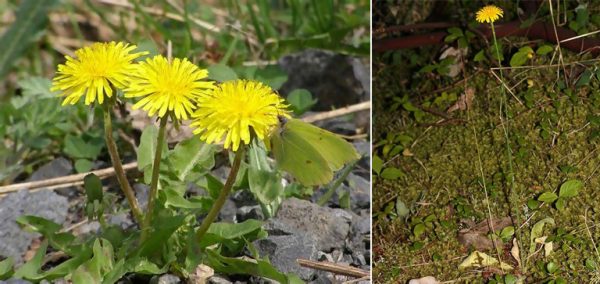
Cat’s ear flowering stems are sturdy and forked, while the stems of the dandelion flowering stema are hollow and unforked. Dandelion leaves in appearance are jagged and hairless, but the cat’s ear has hairy leaves in the shape of lobes.
Related: How to Make Dandelion Bread (Recipe Inside)
Volunteer Tomatoes Vs. Horse Nettle (Solanum carolinense) and Bitter Nightshade (Solanum dulcamara)
Today, there are so many varieties of tomato in the market that it would be very easy to confuse horse nettle for a wild tomato, particularly if the fruit was already picked. The horse nettle is basically a relative of domestic tomato plants, but it has a much higher toxic alkaloid content and can make you very sick.
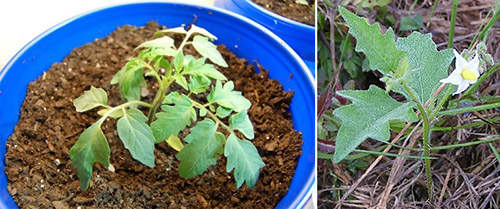
Horse nettle flowers, about 1 inch in diameter, are white to purple and form a 5-pointed star. The leaves are similar to the leaves of red oak with spiky lobes. The stems and leaves both have spines. The fruit appears as small, yellow tomatoes. Domesticated tomato plants have no thorns like those on the stems of the horse nettle but there is an edible wild tomato with spines called the litchi tomato, but it is a red tomato with yellow flesh inside.
Nightshade, Solanum dulcamara, another poisonous tomato relative, are red fruit which looks like tiny tomatoes. The berries are soft and smell like tomatoes, but the fruit only has a length of 1/2 inch long.
Related: 10 Potent Plants That Kill Pain Fast
Wild Blueberries Vs. Tutsan Berries
Tutsan berries, Hypericum androsaemum, also known as Sweet Amber, are a life-threatening lookalike that has spread throughout North America. The berries are similar to the very tasty, wild blueberries. Gastrointestinal complications, elevated heart rate, fatigue and other potentially dangerous symptoms are caused by tulsan berries.
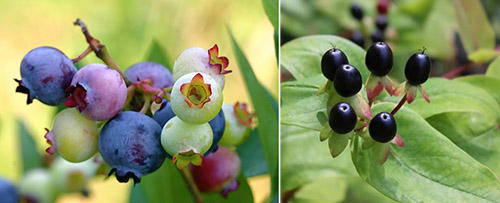
Sweet amber blooms during the early summer through late summer, producing yellow flowers. The berries turn white/green, red, then dark purple. Natural blueberries when ripe are deep blue.
Tutsan is a herbal herb used to treat skin injuries and other medical conditions. It is important to know the plant in all circumstances before consuming or using berries. Most berries are and are easily mistaken for poisonous for edible plants.
True Morels Vs. False Morels
Hopefully, you already learn that you are very cautious when foraging mushroom. So many varieties will make you sick and some are lethal. Since childhood, we have been advised to always consult with an expert on mushrooms. Yet, people still end up in an emergency room for eating the wrong mushrooms.
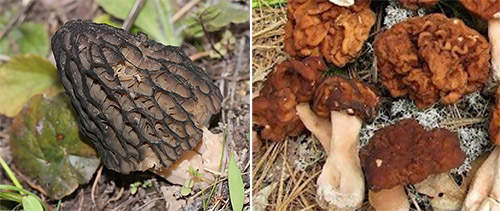
The false Morel is one that has the potential to put you there. False morels has a wrinkly cap that mimics a true morel’s cap. Morels have a naturally hollow stem and a well-attached cap, while the false morel has a solid stem.
A hollow base, however, can not be taken as a definite indication of the real thing, as slugs or other standards will eat out the heart of a false morel. Please consult an expert on foraging mushrooms before consuming any wild mushrooms.
Wild Grapes Vs. Moon Seed
Moon Seed is a plant in Canada that has spread into the U.S. It is a woody vine very similar to wild grapes. The fruit looks like grapes in bunches, and can easily be mistaken for the edible wild grape.
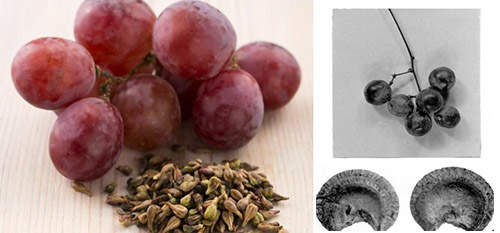
The Moon Seed has one attribute distinguishing it and the secret is in its name. Its seed has the form of a crescent moon. To identify the plant, take one of the grape-like berries and crush it.
Grapes have round seeds while the moon seed has a definite crescent shape. If you live in a wild grape-growing area, make a habit of crushing one grape before harvesting the vine. This way, you’ll know you’re having a grape that’s edible. This plant’s leaves are also poisonous, so be cautious in the spring when picking grape leaves.
Related: 5 Home Remedies for Diarrhea
Cat Tails Vs. Yellow Tail and Blue Tail Iris
If you live in an environment where they spread, cat tails are wonderful plants for survival. Each part of the plant is edible, and grows throughout the year. When the flower head is grown on a true cat tail it will be brown. The plant has two lookalikes: the iris, which is poisonous, and the calamus, which is not. For a brief time in the spring, the plants become lookalikes until the heads of the seeds develop. The true cat tail is quickly grows taller and more prominent as the summer progresses.
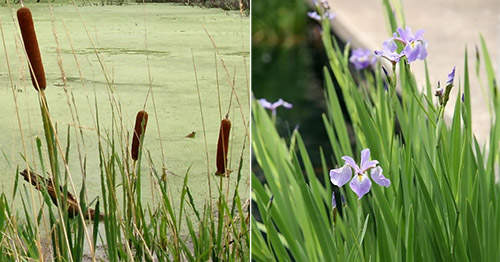
There are two Iris which are potential lookalikes. Compared to the cat tail, Blue Flag (Iris versicolor) and Yellow Flag (Iris pseudoacorus) have leaves. The Iris leaves, however, are flat and smooth with no ribbing at the base. From the root, the leaves fan out. Cat tails have a mid-rib developing around the stalk and the leaves do not make up a fan. Both members of the Iris family are dangerous.
Rhododendrons vs. Bay Leaves (Laurus nobilis)
The ornamental rhododendron leaves look very much like bay leaves but rhododendron plants are dangerous. A major danger with this plant is that the nectar is especially toxic, so the honey made from the plant is toxic too. It can cause nausea, vomiting and weakness. Be vigilant if you have nearby bees, and plan your honey harvest.
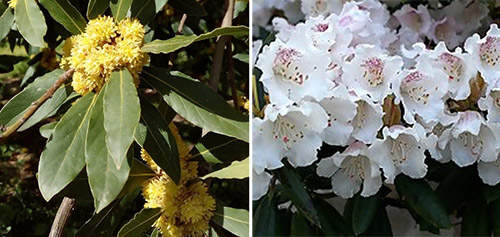
All bay trees and rhododendrons are often planted in the US, raising the risk of misidentification. Often, the plants can be found growing side by side, thereby making caution even more important.
The best way to tell apart the plants is to compare the flowers. Bay trees usually bloom from May to June and have flowers of purple, yellow, or white.
Rhododendron blooms from June to July so some overlap can occur, but rhododendron flowers develop at the end of small branches in clusters of 10 to 20 bell-shaped flowers. Flowers can be white, pink, dark violet or lavender. Notice the difference in the shapes of flowers below.
Wild Leek Vs. Anticlea Elegans
There are over 900 different species of wild garlic and wild onions that are edible, and they are routinely collected and eaten.
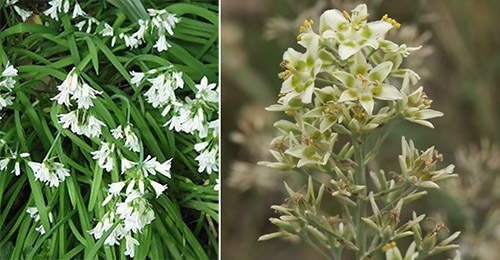
A few varieties, however are deadly. Known as “death camas”, varieties of Anticlea or Toxicoscordion are similar plants with onion like bulbs, leaves, and flowers. These deadly lookalikes do not have the pungent onion or garlic smell that make the edibles so recognizable.


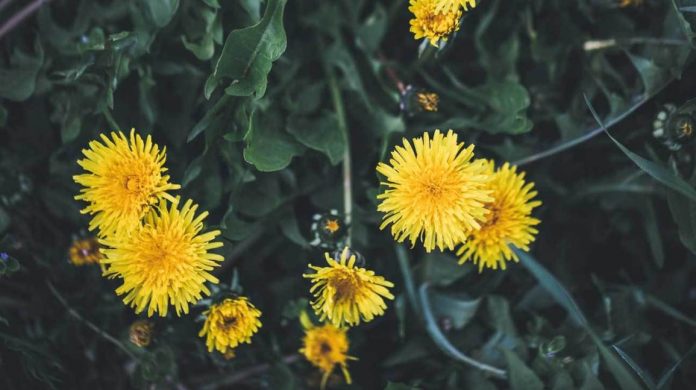









I’ve read about how rhododendrons are poisonous many a time, but when I was younger, I used to eat the nectar from them literally ALL the time, and nothing ever happened…
This puzzles me.